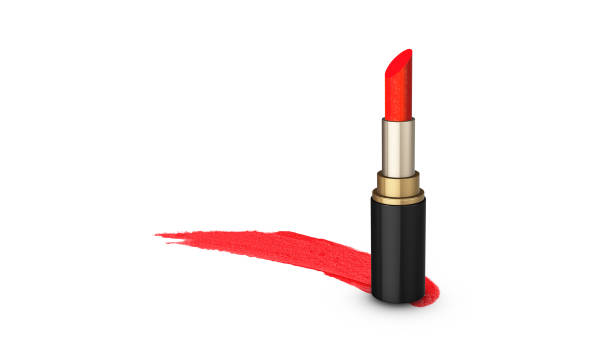Like other industries, the fashion industry is rapidly adopting advanced technology. In 2021, they are using apps like Instagram, TikTok, and even video games, such as Animal Crossing, to reach their audience. Fashion tech has advanced in another way: 3D.
F Like other industries, the fashion industry is rapidly adopting advanced technology. In 2021, they are using apps like Instagram, TikTok, and games, such as Animal Crossing, to reach their audience. There is another technological advancement in fashion beyond this: 3D.
Fashion brands using 3D technology have become a trend on social media. 3D fashion collaborations, such as those between fashion leaders like Puma and 3D supporters like The Fabricant, as well as recent promotions, like Anifa’s virtual runway show, demonstrate how fashion brands are able to use 3D technology at various points in their internal and external product lifecycles. The adoption of 3D technology in fashion is beneficial to both brands and tech makers, as well as the consumer. Find out why 3D is so popular and what tools you can use to join the trend.
Fashion in 3D takes center stage.
The digital fashion tools that brands use, in general, allow their internal teams to:
Materials can be purchased at a discount.
Reduce their need for additional product models
Avoid Material Waste
* Visualise products in real life before they are finished
Although brands continue to use models in their marketing materials to showcase their clothing, for most consumers, using digital fashion tools to model their clothes before the sampling and manufacturing stages allows them to make mistakes and edits without much financial or material consequence when creating a 3D avatar, for example, the focus is still on measurement, fit, and flow. It reduces the amount of fabric and trim that is used to correct a mistake or alter a design.
Some brands use 3D modeling software such as CLO 3D and Browzwear to create virtual clothes. Many other software tools are available, but these three are our favorites for fashion product development.
CLO3D- 15 Years Research Results in a Collaborative 3-D Clothing Solution
CLO is a popular and affordable 3D program that individuals and companies use to create virtual fashion. CLO 3D allows users to create 2D patterns and then add dimension to their designs using the software. The technology is easy to use for anyone who wants to develop 3D clothing and learn more about it before signing up.
Pros
Register for a 30-day trial and get a free 30-day trial.
Learn how to make 3D designs, avatars, and 3D models.
The software guide explains each feature in detail.
* Connectivity with other CLO users
Use 2D design as an option
* Student discount
Cons
* $50 per month or $450 annually
There are a few user reports about fabric export buttons and repeat avatar patterns.
Please note that the dimensions of this avatar are limited.
Browzwear: 3D Software that Saves time on physical sampling
Browzwear is used by several large fashion companies, including Nike, to enhance their product development. More than 650 companies use this platform to design 3D fashions for their brands. Browzwear is different from other 3D tools in that it offers blogs and webcasts about the user experience, navigation of their software, and the fashion industry. They also host a live fashion series hosted by fashion experts. Browzwear will provide users with a wealth of information about 3D fashion and the fashion industry in general.
Pros
* Provides multiple 3D fashion software choices such as VStitcher, Lotta, and VStitcher.
* Webinars on VSticher Animation workflow for independent users and business
Browzwear University provides education on VSticher, as well as other features and programs.
Cons
Prices are not displayed on the site
Browzwear Indie Program is only open to independent users.
* No User Community
Marvelous Designer – one of the most realistic 3D clothing software tools on the market
Marvelous Designer provides realistic simulation and material for fashion brands creating virtual fashion. It also auto-sizes avatars. Marvelous Designer, unlike some other 3D design software tools, allows users to customize an avatar and then add animations once they have finished their final product designs.
Pros
* Individual users pay $39/month
* Fabric representations that are accurate and realistic
* Realism simulations of clothing movements
Features such as animations and trim details are great.
* Provides a community of users that allows Marvelous Designers to communicate among themselves or with the company
* Customisable avatar
Cons
Prices range from $39 to $1900 depending on the package or material
Fashion brands who are less experienced with 3D technology may prefer to partner with a company such as The Fabricant for their 3D fashions.
3D fashion beyond design and production
Brands can save money by using 3D fashion to reduce costs for fabric, shipping, and model casting. Customers also get a better shopping experience. In many online shops, customers can upload a picture of themselves into a virtual dressing room to see how they look wearing certain products. Online shopping has increased in the past year due to a pandemic that is affecting people all over the world. Some people prefer to go shopping in person, but others are more comfortable staying inside where they can try on virtual clothes.
Fashion brands are constantly trying to keep pace with the rapid growth of technology. Brands that use 3D Fashion Tech are at the forefront in terms of using the most advanced tools to design and market their products.




